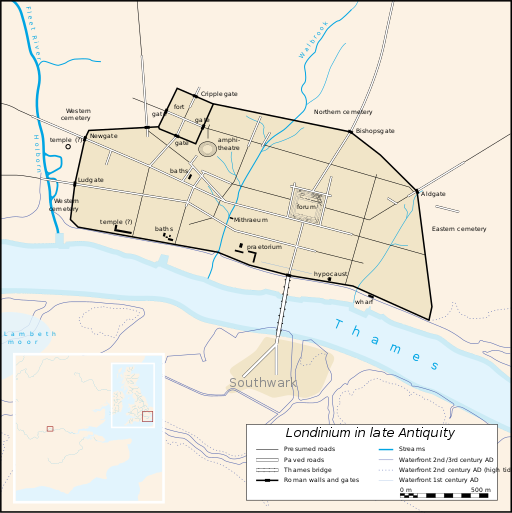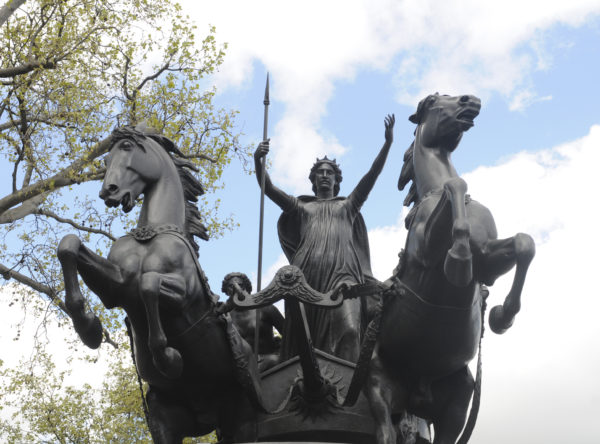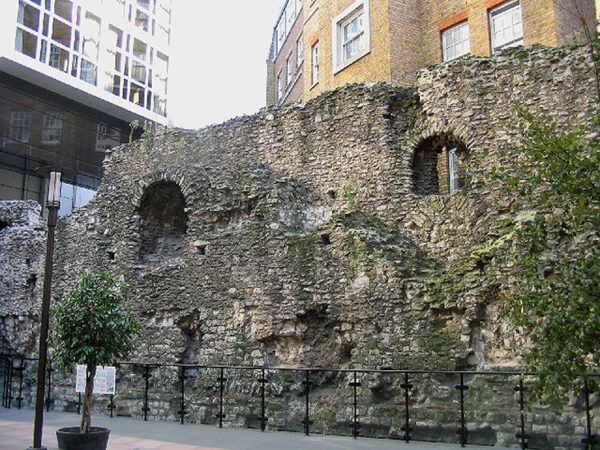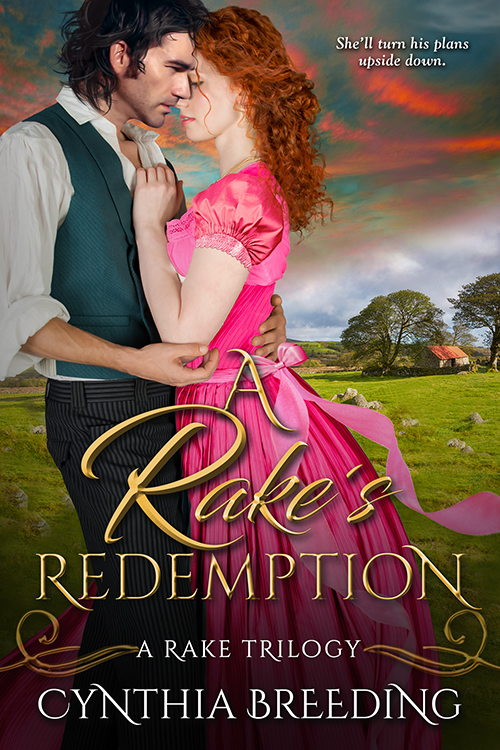Long before dukes and earls rode in fancy carriages through London’s Hyde Park, and long before the Norman-French claimed victory at Hastings, Romans established the city of Londinium.
Julius Caesar first visited Britain in 55 B.C., but it wasn’t until A.D. 43 that Emperor Claudius decided the Thames was a favorable shipping route from the North Sea and established a town in the area just east of present day Westminster.
The area extends roughly from east of Waterloo Bridge to Tower Bridge and north from the Thames toward the Museum of London. If walking, there are stone Dragon monuments that mark the boundaries of the Old City.

By Fremantleboy, Drallim (translation) [CC BY 2.5 (https://creativecommons.org/licenses/by/2.5)], via Wikimedia Commons
Perhaps she was the first, true Women’s Libber! In any case, she was indeed a Warrior Woman whom men followed into war. A statue of her driving her chariot stands at the corner of today’s Westminster Bridge and Victoria’s Embankment, right across from Parliament.

photo by Staff Sergeant Nick McNaughton
The Romans, however, were not known for accepting defeat. They rebuilt Londinium, including a stone wall to protect from future attacks. London Wall (between Bishopsgate and Aldersgate marks where the Roman wall once stood. Portions of it can also be seen on the grounds of the Tower of London as well as beneath St. Brides Church on Fleet Street and at the Museum of London.

By John Winfield, CC BY-SA 2.0, https://commons.wikimedia.org/w/index.php?curid=3186845
A gladiatorial ampi-theatre was built on the North Bank of the Thames off Gresham Street where the Guildhall now stands. A Forum was added near present-day Cornhill and Gracechurch Streets. Close to Cheapside and Queen Street, a Roman-style bathhouse with hypocausts provided the traditional three-chamber method of bathing—soaking in the caldarium (hot, steamy water), then into the tepidarium (tepid temperature) and dipping into the frigidarium (very cold water) for the finish.
A number of temples to Roman gods and goddesses were also erected through the first two centuries. When Christianity emerged in the early 4th century, Romans did in Britain what they did across the Continent…they simply replaced Pagan holidays with Christian ones. The Celtic Imbolc (February 1) became Candlemas, spring Beltane became Easter, the Summer Solstice of Litha became St. John’s Day, autumn Samhain became All Hallows Eve, and the Winter Solstice festival of Yule became Christmas (celebrating the Christ’s Mass).
The Romans abruptly abandoned Britain in the early 5th century to return to the Continent and defend their empire from Eastern invaders, but many remnants of their culture remains, if one knows where to look.
Another point of interest within the old Roman walls is the circular Temple Church built by the Templars in 1185. Not only is it still standing, but it’s in regular use for Sunday services and special events.
But Temple Church—and the Templars—are fodder for another day.
A RAKE’S REDEMPTION by Cynthia Breeding
Alexander Ashley has decided women of the ton are more interested in status than love. His game is seduction and nothing more. His feelings regarding aristocratic ladies leads to an outlandish idea—prove a servant can be taught to be as ladylike as those born to it. And the beautiful Inis Fitzgerald might be just the woman for his plan.
Inis Fitzgerald escaped her home in Dublin to avoid an arranged marriage and is now working for a rakishly handsome lord who seems to enjoy bucking convention as much as she does. She plays along with his little game, pretending she knows nothing about being a lady. It doesn’t take long before Alex discovers Inis is every bit as much of an aristocrat as the women he’s sworn only to seduce and not love…
Romance Historical [Entangled Amara, On Sale: July 23, 2018, e-Book, ISBN: 9781640632462]
Buy A RAKE’S REDEMPTION: Kindle | BN.com | iTunes/iBooks | Kobo | Google Play | Amazon CA | Amazon UK | Amazon DE | Amazon FR
About Cynthia Breeding
An avid reader of anything medieval, Cynthia Breeding has taught the traditional Arthurian legends to high school sophomores for fifteen years. She owns more than three hundred books, fictional and non-fictional, on the subject. More information on Arthur, Gwenhwyfar and Lancelot can be found on the Historical Account link. In addition, she has won numerous awards including the Holt Medallion, Beacon Contest, Barclay Gold, More Than Magic and Ancient City Romance Authors. Cynthia lives on the bay with her Bichon Frise and enjoys sailing and riding on the beach.




No Comments
Comments are closed.